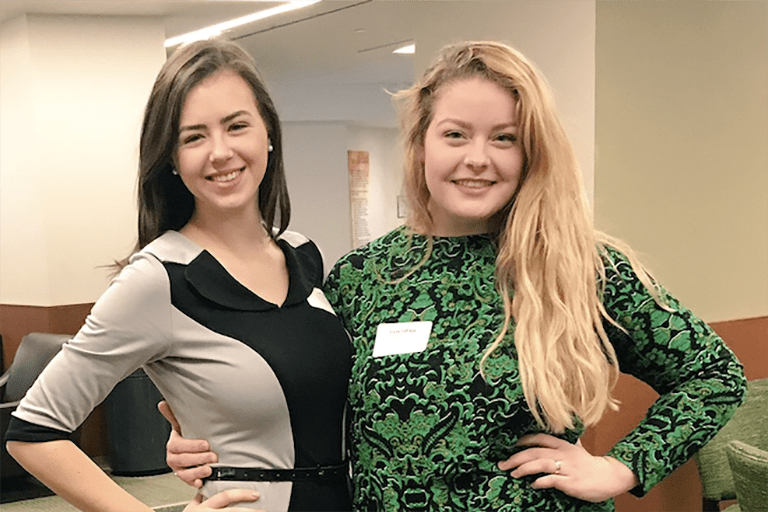Though the Flint Water Crisis may not currently be dominating news headlines, it remains a critical situation that many are still working to improve. Journalism seniors Chloe Kiple and Lizzy Lafave were able to present their work on Dr. Geri Zeldes’ documentary, Flint Med, at ComArtSci’s ”Say it in Six” presentations last week.
Flint Med is a feature-length documentary that follows medical students working in Flint. These medical students are part of a program called Leadership in Medicine for the Undeserved (LMU) and were accepted into the program for demonstrating empathy as well as a desire to serve their community.
“LMU students work in under-resourced communities such as Flint to learn how to practice medicine in poor areas,” said Kiple. “The LMU program has taken on a different dimension with the onset of the city's water crisis. Now, not only are LMU students learning how to serve a poor community, but how to tackle a health crisis.”
Kiple and Lafave’s presentation concentrated on both health officials and journalists. They wanted to tie these different roles together, as they’ve both played such a crucial part in the crisis.
“Our presentation focused on the nexus between the health officials working on the crisis as well as the journalism community,” said Kiple. “Working together, the health community focuses on solving the physical problems associated with the crisis while journalists empower the community with information.”
Telling the Story
Kiple and Lafave were invited to work on the project after taking Zeldes’ JRN 306 class, Radio and TV News. The pair understood that even though many news stations have stopped reporting, there’s still an ongoing crisis that needs attention.
“I was excited about being part of a project chronicling this important national story,” said Kiple. “Although the news trucks have largely left Flint, the city is still suffering. I wanted to be one of the groups that stuck around to tell the story.”
To say that Kiple and Lafave were inspired would be putting it lightly. Working on a project as large and impactful as Flint Med opened their eyes to what was happening less than 50 miles from their own home.
“I was moved by the program and the positive outlook it brings to the horrible situation in Flint,” said Lafave. “I was inspired by those trying to help from the inside, and the possible long-term effects the program could have. I wanted to help tell that story.”
How to Get Involved
If you’re a ComArtSci student looking to get involved in other influential projects, look no further than your professors. This college is full of faculty looking to dish out real-world experience and give students a chance to add to their resumes.
“Go to office hours, raise your hand, talk to your professor after class,” said Kiple. “Ask how you can get more involved, how you can learn more. Even if you're spending a few minutes after class with your professor, your interest and enthusiasm will be noticed and rewarded. When an opportunity arises, your professor might think of you.”
There’s an endless amount of things to get involved in at ComArtSci, whether it’s reporting, writing, researching or the dozens of other communications-related material we work on here each and every day. Take advantage of your resources and you just might stumble upon a life-changing opportunity.
By Katie Kochanny
